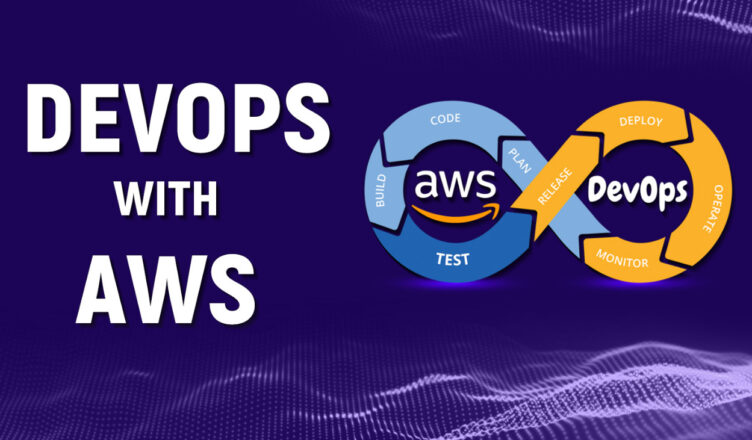Introduction
In the dynamic world of software development, DevOps practices are essential for fostering collaboration, improving efficiency, and accelerating deployment. AWS (Amazon Web Services) offers a comprehensive suite of tools designed to streamline and automate DevOps processes. These tools enable teams to build, test, and deploy applications with greater speed and reliability, ensuring seamless integration and continuous delivery. Consider joining the AWS DevOps Certification to know more about various AWS DevOps tools.
This article explores the most usable AWS DevOps tools and their key features.
Top Most Useable AWS DevOps Tools
AWS (Amazon Web Services) offers a plethora of tools that can significantly enhance DevOps practices by automating processes, improving collaboration, and increasing the efficiency of software development and deployment.
Below are some of the most usable AWS DevOps tools that are widely recognized for their capabilities and integration within the AWS ecosystem:
1. AWS CodePipeline
AWS CodePipeline is a continuous integration and continuous delivery (CI/CD) service for fast and reliable application and infrastructure updates. Furthermore, the AWS CodePipeline automates the build, test, and deploy phases of your release process. This takes place every time there is a code change, based on the release model you choose to define.
Key Features:
- Integration with other AWS services and third-party tools.
- Easy visualization of the release process.
- Customizable workflows.
2. AWS CodeBuild
AWS CodeBuild is a fully managed build service. It runs tests, compiles source code, and produces software packages that are ready to deploy. Additionally, it eliminates the need to manage, provision, and scale your own build servers.
Key Features:
- It scales continuously and processes multiple builds concurrently.
- Integration with CodePipeline for seamless CI/CD workflows.
- Supports a wide range of languages and standard build tools.
3. AWS CodeDeploy
AWS CodeDeploy automates various application deployments to a variety of compute services. These include Amazon EC2, AWS Lambda, AWS Fargate, and your on-premises servers. It helps you to release new features quickly and avoid downtime during deployment.
Key Features:
- Minimize downtime with deployment strategies like rolling, blue/green, and canary deployments.
- Ensures automatic rollback in case of deployment failures.
- Monitoring and logging for tracking deployments.
4. AWS CodeCommit
AWS CodeCommit is a popular fully managed source control service. It makes it easier for the teams to host secure and scalable Git repositories. It helps to store and manage source code and track changes. Consider investing in the Aws Devops Online Training for the best skill development.
Key Features:
- Highly secure with encryption at rest and in transit.
- Seamless integration with other AWS DevOps tools.
- Supports large file storage and high availability.
5. AWS CloudFormation
AWS CloudFormation gives developers and systems administrators an easy way to create and manage a collection of related AWS and third-party resources, provisioning and updating them in an orderly and predictable fashion.
Key Features:
- Infrastructure as Code (IaC) allows for version control and automation.
- Templates to define infrastructure and dependencies.
- Integration with other AWS services.
6. AWS Elastic Beanstalk
AWS Elastic Beanstalk is a popular and easy-to-use service. It is widely used for deploying and scaling various web applications and services. Furthermore, it handles the deployment, from load balancing, capacity provisioning, and auto-scaling to application health monitoring.
Key Features:
- Quick deployment without needing to manage the underlying infrastructure.
- Supports multiple programming languages and frameworks.
- Monitoring and logging for application health.
7. Amazon CloudWatch
Amazon CloudWatch is a popular monitoring and observability service. It has been built for DevOps engineers, developers, site reliability engineers (SREs), and IT managers. It offers data and actionable insights to monitor applications. Moreover, it helps understand and respond to system-wide performance changes. Additionally, you can optimize resource utilization, and get a unified view of operational health.
Key Features:
- It collects and tracks metrics, monitors log files, and sets alarms.
- Automatically reacts to changes in the AWS resources.
- Integration with other AWS services for automation and troubleshooting.
8. AWS OpsWorks
AWS OpsWorks is a popular configuration management service. It provides managed instances of Chef and Puppet. These tools help you automate how servers are configured, deployed, and managed across your Amazon EC2 instances or on-premises compute environments. The AWS DevOps Certification course offers complete guidance on using these tools for more efficiency.
Key Features:
- Supports Chef Automate and Puppet Enterprise.
- It helps automate different server configurations, deployment, and management.
- It works with both Linux and Windows environments.
9. AWS X-Ray
AWS X-Ray is used to help developers analyse and debug production and distributed applications, such as those built using a microservices architecture. It also provides an end-to-end view of requests as they travel through your application. Additionally, it shows a map of your application’s underlying components.
Key Features:
- Identify performance bottlenecks and troubleshoot root causes of errors.
- Visualize service maps and trace individual requests.
- Integrates with AWS Lambda, Amazon EC2, Amazon ECS, and more.
10. AWS Systems Manager
AWS Systems Manager provides a unified interface for managing your AWS resources. It integrates with various AWS services to provide a central place to view and manage your resources, automate operational tasks, and ensure compliance.
Key Features:
- Centralized resource management.
- Automation of common tasks and maintenance actions.
- Compliance management and monitoring.
Conclusion
In summary, the AWS DevOps tools collectively enable organizations to automate, streamline, and enhance their software development and deployment processes. By leveraging these tools, teams can achieve faster delivery times, improved collaboration, and higher reliability in their applications and infrastructure. The Aws Devops Online Training offers the best guidance to aspiring professionals in this field. Integrating these tools into your DevOps pipeline can lead to a more efficient and effective development lifecycle, allowing your team to focus on innovation and continuous improvement.

